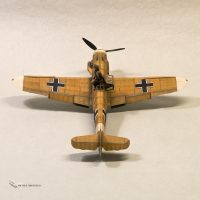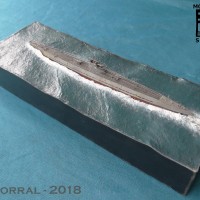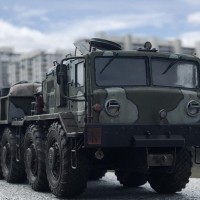Fighters over the Aegean
Acknowledgements
Once again sincere thanks are due to Özkan Türker who was unstinting in his help with this project. He even kindly supplied me with a photo of my chosen aircraft.
Introduction
I've always liked the PZL series of gull wing fighters and have built quite a few of them. As some will know I tend to favour the IBG versions which are highly buildable and accurate. I've also always wanted to do a series of Aegean nation P.24s (namely Greece and Turkey) and having done a Greek P.24G wanted a cannon armed P.24 to go with it. IBG don't do Greek and Turkish aircraft in the same boxing and so their first cannon armed P.24 was the Turkish version (though the box does clearly state it's a P.24A/F). As I'm going to be doing them all the release of the Turkish P.24A was very welcome.
History
The P.24 arose as a more powerful version of the P.11 for the export market. As part of the licensing conditions the P.11's Bristol Mercury engine couldn't be exported and so a new engine needed to be found. This turned out to be the Gnome-Rhône 14 series and the French manufacturer had no problems with the engine being exported. The Turks, Greeks and Bulgarians all placed orders for the P.24 which came in two versions, one with two machine guns and two cannon and one with 4 machine guns, all wing mounted. Even so the Turkish Air Force originally placed an order for the Dewoitine 510 in preference. This order was a victim of the Hatay issue. France had an imperial mandate for the province of Hatay which was attached to Syria and was due to be subject to a plebiscite on which country it would be finally part of. Ataturk, the founder of modern Turkey had always considered it part of Turkey and wanted it back. However, he had been prepared to wait and accept French control when Turkey gained independence. With the date of the plebiscite approaching he started manoeuvers to return Hatay to Turkey. The French were displeased and cancelled the Dewoitine order causing the Turkish Air Force to look round quickly for a new fighter. PZL were more than happy to step into the breach and to provide their latest fighter.
The initial Turkish order was for 40 aircraft to be built by PZL. These were 14 cannon armed P.24As (2001-2014) and 26 machine gun armed P.24Cs (2101-2126). A further 6 P.24As (2015-2020) were to be license built by KTF (the Turkish state aircraft manufacturer) along with 18 P.24Cs (2127-2144). The PZL built aircraft started to be delivered in 1936 with the first KTF P.24A flying in May 1937. Some sources claim that up to 100 aircraft were manufactured by KTF but apart from two P.24Gs (2146 and 2147) this is not so. The P.24s initially entered service with the VII and VIII air battalions and had a successful career being finally withdrawn in 1943.
The Model
IBG have done a lot of research for this model and you get parts in profusion - two different fuselages and engines with the appropriate cowlings. However, their research has let them down in some areas and they've missed important differences between the aircraft options chosen. They're excellent on the variation between the Gnome-Rhône 14K and 14N engined aircraft but have messed up the differences between PZL and KTF manufactured aircraft. So careful consultation of photos are necessary to build an accurate Turkish P.24A. The model itself is up to the usual IBG standards - beautifully molded with minimal flash and lots of detail. I also bought the IBG 3D printed enhanced pilots seat. There is a 3D oil cooler set but this only really offers the advantage of being easier to paint. Detail wise the molded on radiators are just as good. There are 4 separate aircraft offered on the beautiful decal sheet and a comprehensive set of stencils (in Turkish) with variations for PZL built and KTF built aircraft. Here we run into the main accuracy issue. IBG offer decals for aircraft #2010 as originally delivered. However, PZL built P.24s came with a smooth unpierced engine front plate. IBG have only included the pierced front plate fitted to KTF built aircraft. It's a very visible error. Some PZL built aircraft were later fitted with the pierced plate but this seems to have been restricted to P.24Cs from the photographs I have seen. Thus the kit really only allows one to build a KTF built P.24. Their Bulgarian P.24B does include the smooth plate so I contacted IBG to see if they could let me have the correct part and they said yes. Nothing came though and I eventually bought a Bulgarian boxing. As I'm going to do a KTF built P.24C it wasn't a problem but it was poor customer service especially as it was their mistake.
Building the model
The model, like all IBG kits I have built, goes together easily and quickly. However, it pays one to take one's time as there are several changes needed to make an accurate Turkish P.24A. The 3D printed seat fits nicely but if one uses the option one needs to use the etched brass and film canopy parts as the plastic ones are too thick. I did use the plastic windscreen though as this is more accurate than the etched brass parts. Careful bending is needed to get a good fit but one the right shape is achieved the end result is excellent. Most Turkish P.24s had an arrangement of the top piece of the canopy and the rear starboard pane in place but check photos if you can, there are some variations. Also be very careful with the IBG instructions, they're not the best. For example, they tell you to use part Q7 for the exhausts but neglect to tell you that you need to cut off the feed pipes to get it to fit. However, with careful study and dry fitting the assembly process is fairly straight forward.
Other modifications I indulged in were (apart from replacing the engine front plate) a scratch built pitot tube, Holt flare holders on the rear starboard strut and redoing the tail skid. On Turkish aircraft (and Greek) the protective bags were removed and the struts were left exposed. It's a fiddly modification but worth the effort as it really adds to an authentic appearance. The engine bearer rods (an etched brass piece) were also replaced with 0.2 mm Albion brass rod. I left the armament off as one doesn't see photos of Turkish P.24As carrying their armament (P.24Cs yes but not P.24As). When the armament wasn't carried the gun openings were plugged so these needed to be made both for the cannon and machine positions. The model was painted in overall Tamiya enamel XF11 chrome silver which was satin varnished. Red was AK11089 Blood Red which is a stunningly close match to the decals especially with a coat of satin varnish. The decals themselves performed well. The best setting solution for these particular decals turns out to be Tamiya acrylic paint thinner which even pushed them into the corrugations. I chose to make the first Turkish P.24A #2001 and this entailed some straightforward cutting of the kit decals.
Conclusion
What a lovely little model - it goes together well and with enhancements really looks the part. I enjoyed building it but would say it's not a beginner's model. Certainly one has to have some skills to complete it successfully even without the modifications I added. As I mentioned I have a KTF P.24C to build and when IBG release it a Greek P.24F. I'm looking forward to them all. The final photo shows the P.24A posed next to my P.24G










Superb result, thoroughly researched and excellently built, Christopher! Excellent article, too!
Congratulations!
Hi Spiros - That's really kind of you. IBG make very nice models and they build up well.
Very nice build of a obscure (for me) aircraft. I've seen those kits around and am intrigued into getting one.
Many thanks for the kind comments Dan. The IBG (P.11 and P.24 series) or the Arma (P7a and P.11C) are worth looking at. IBG score, to my mind, with all their variants and some spectacular colour schemes.
Nice work, Christopher. Thanks for all the info. An excellent result.
Many, many thanks Tom. I really appreciate the comments.
A very nice result, Christopher @christopher
Great supporting article as well.
Nice final picture with both beautifully build aircraft next to each other.
Thanks @johnb You're too kind.
Great build and a wonderfully informative article, Christopher @christopher! 👏
Thanks ever so much Gary. I'm really glad you liked it.
Well done Christopher.
Many, many thanks Allan
Another lovely build - well done!
Thanks ever so much Greg - you're very kind to say so.